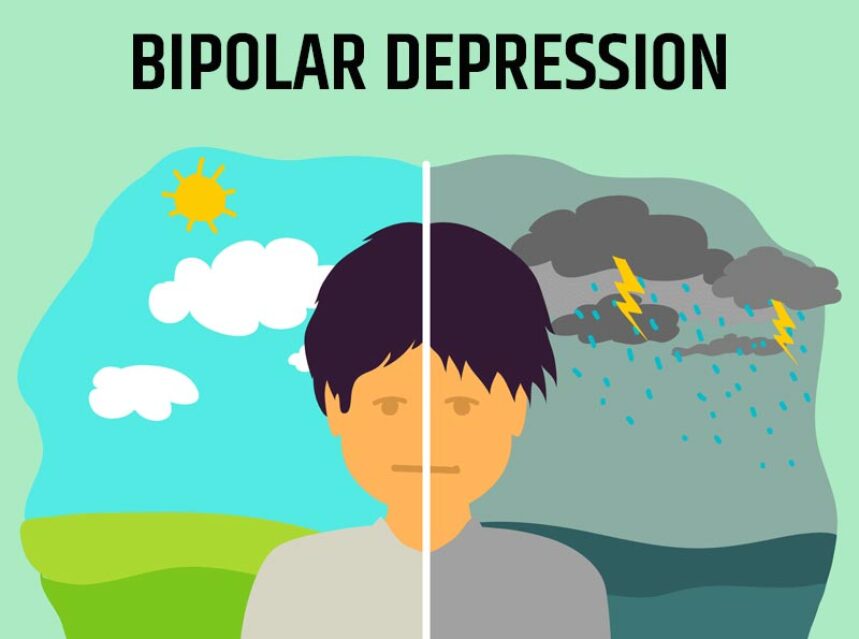5 Bipolar Disorder Treatments You Should Know About


Though it can be managed, when left untreated, bipolar disorder can completely disrupt a person’s life. This mental health condition causes unusual and sometimes extreme shifts in a person’s mood, energy, and activity levels, affecting their judgment, ability to think clearly, relationships, and daily life in general. That’s where treatment comes in.
There’s no one magic way to ease symptoms of bipolar disorder. Instead, experts generally recommend that people with this condition undergo psychotherapy and take medication to help stabilize their mood.
Before we dive into the medications used to treat bipolar disorder, let’s go through a quick primer on the condition.
There are two main forms of bipolar disorder based on the combination of episodes you experience. Manic episodes involve having an extremely elevated mood and energy levels for at least seven days (or for shorter than that, but severely enough to require hospitalization), according to the National Institute of Mental Health (NIMH). Hypomanic episodes consist of less extreme but still elevated and prolonged mood and energy levels. Depressive episodes involve having a downcast mood lasting at least two weeks.
If you have bipolar I, you’ve had at least one manic episode preceded or followed by a hypomanic or depressive episode, the NIMH explains. You may also have episodes that contain symptoms of depression and mania. Bipolar II means you’ve had at least one major depressive episode and a hypomanic episode, but have never had a manic episode.
While there are some medications that can treat manic, hypomanic, and depressive episodes, others will only treat certain phases, Jamie Alan, Ph.D., an assistant professor of pharmacology and toxicology at Michigan State University. “Some are also good for preventing episodes,” she says. Here are the different kinds of drugs doctors often recommend for treating bipolar disorder.
1. Mood stabilizers
These drugs, which include lithium, valproic acid, carbamazepine, and lamotrigine, are usually used to help control manic or hypomanic episodes, the Mayo Clinic says. Some of them, like lithium, can both treat and prevent these episodes, while others, like lamotrigine, only work to prevent them.
Mood stabilizers generally work by decreasing abnormal brain activity, according to the NIMH. This means that, unlike some of the other drugs on this list, mood stabilizers affect the actual pathology of the disease instead of only the symptoms, Nassir Ghaemi, M.D., professor of psychiatry at Tufts University School of Medicine. However, the amount of time it takes for mood stabilizers to work depends on the specific medication. For instance, lithium may kick in fully after a week, but it may take a few weeks or longer with carbamazepine and other treatments.
Side effects also vary by drug but can include itching, rash, excessive thirst, frequent urination, nausea and vomiting, an irregular heartbeat, drowsiness, weight changes, blackouts, loss of coordination, and more, according to the NIMH. Mood stabilizers may also cause more serious side effects. For instance, in rare but very serious cases, lamotrigine can lead to a life-threatening immune response, according to the U.S. National Library of Medicine. As with any medication, before starting mood stabilizers you should ask your doctor about side effects and any red flags of a negative response.
2. Antipsychotics
Psychosis involves losing contact with reality, and it can include delusions and hallucinations. Severe episodes of mania or depression may prompt psychotic symptoms, according to the NIMH, and antipsychotics might help.
There are two kinds of antipsychotics: first-generation (typical) and second-generation (atypical), the NIMH explains. First-generation antipsychotics include chlorpromazine, haloperidol, perphenazine, and fluphenazine, the NIMH says. The second-generation drugs include olanzapine, risperidone, quetiapine, aripiprazole, ziprasidone, lurasidone, cariprazine, and paliperidone. Antipsychotics generally work by affecting the levels of brain neurotransmitters that impact mood, like serotonin and dopamine, Alan explains.
Both first- and second-generation antipsychotics treat manic symptoms, but only second-generation antipsychotics are thought to work more broadly and target depression as well, the NIMH explains. It can take just a few days for some symptoms, like hallucinations, to recede, but it may take up to six weeks to reap the full benefit of antipsychotics, according to the NIMH.
Your doctor may prescribe an antipsychotic alone or along with a mood stabilizer. “The thought is that the antipsychotic can manage the [episodes] while the mood stabilizer has time to work,” Alan says. “The general consensus is that an antipsychotic and a mood stabilizer provide a greater benefit.”
There’s a wide range of potential side effects with antipsychotics, like drowsiness, dizziness, weight gain, dry mouth, constipation, blurry vision, low blood pressure, uncontrollable physical movements like tics, seizures, and lowered white blood cells, the NIMH explains. First-generation antipsychotics can come with added physical risks, like muscle spasms, tremors, restlessness, and the condition tardive dyskinesia (TD), which causes uncontrollable muscle movements, usually around the mouth. If your doctor recommends antipsychotics, ask if they think first- or second-generation would be a better fit for you and what side effects you can expect.
3. Antidepressants
As you’re probably aware, antidepressants help manage depression. This can be vital for those with bipolar disorder.
There are plenty of antidepressants out there, but the most common are selective serotonin reuptake inhibitors (SSRIs), which can affect mood by increasing the amount of serotonin in the brain, according to the Mayo Clinic. (Other antidepressants also work by changing the levels of brain neurotransmitters, the Mayo Clinic explains.)
Here’s the thing: Antidepressants can sometimes trigger a manic episode in people with bipolar disorder, according to the FDA. “They are effective in the depressive phase, [but] antidepressants alone may worsen the cycle of bipolar,” Alan says. That’s why they’re usually prescribed along with a mood stabilizer or antipsychotic.
Antidepressant side effects vary slightly by drug but can include nausea, sleep problems, increased appetite, decreased sex drive, fatigue, dry mouth, blurred vision, constipation, and dizziness, per the Mayo Clinic.
4. Antidepressant-antipsychotics
There’s only one antidepressant-antipsychotic out there right now. It combines the antidepressant fluoxetine and the antipsychotic olanzapine to give people two kinds of medication at once, helping to treat depressive and manic symptoms.
Like many other drugs used for treating bipolar disorder, experts aren’t totally sure how this drug works. It seems to affect the neurotransmitters serotonin, norepinephrine, and dopamine and takes four to six weeks to fully kick in, Alan says.
The most common side effects here include dry mouth, fatigue, excessive sleeping, increased appetite, swelling of the hands and feet, tremors, and blurry vision, according to the U.S. National Library of Medicine.
5. Anti-anxiety drugs
Specifically, a class of drugs known as benzodiazepines may help with side effects of bipolar disorder like anxiety and trouble sleeping, the Mayo Clinic says. They can take effect in just hours or days, but are usually used on a short-term basis because they can also be habit-forming.
Benzodiazepines work by increasing signaling of GABA, a neurotransmitter that reduces the activity of your neurons, Alan says. “These are helpful in the manic stage,” she adds. The exact reason why isn’t entirely known, Alan says, but one theory is that the increased energy of manic episodes is generally associated with heightened neuron signaling, so GABA’s work to inhibit this may help offer relief. However, Dr. Ghaemi points out that anti-anxiety medication—while helpful in some cases—is “irrelevant to the underlying illness.” It can help with some bipolar disorder symptoms, but it won’t treat the underlying problem.
If your doctor does prescribe anti-anxiety drugs to help with your bipolar disorder, you may experience side effects such as dizziness, drowsiness, nausea, blurry vision, headache, confusion, and fatigue, according to the NIMH.
If you have bipolar disorder and aren’t sure which medication is right for you (or if yours is working), talk to your doctor.
Finding the right drugs can take a frustrating amount of experimentation, but trying to land on the right treatment plan is worth it. Speak with a medical professional to find a new drug or combination of drugs that can work better for you.


